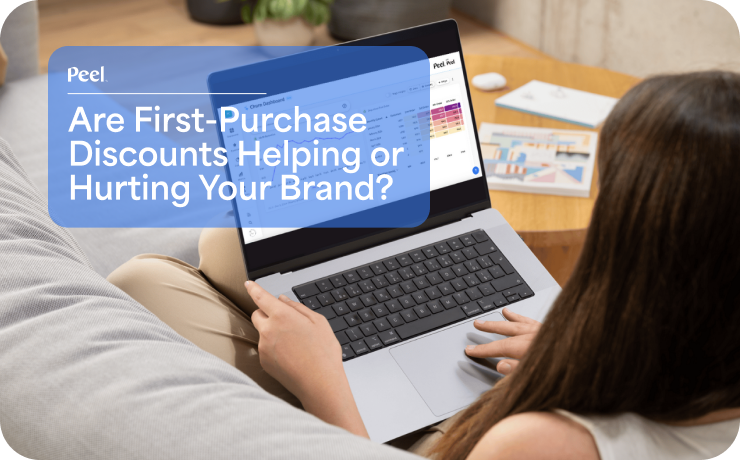The world is full of advice for setting goals and achieving them. Personal goals, corporate goals — any goal you can imagine. Many even set SMART goals, the best way to set specific goals, not just general aims like “succeed in business” or “be more mindful.” Smart goals are:
- Specific
- Measurable
- Achievable
- Relevant
- Time-bound
For someone running an e-commerce store, it's important to set monthly or quarterly goals and track your progress on how you're pacing on each individual metric. Here are 8 goals Shopify brands have set, monitored, and seen success in using Peel:

1. Revenue (New)
It just makes sense to track the revenue you earn through your online store. However, breaking it down into narrower categories can help you track how people feel about your company. Tracking new revenue lets you see how much you’re earning from new customers over time.
Tracking new revenue can also help you understand whether a current marketing campaign is working. If you’ve recently offered free shipping and notice a spike in new revenue, that’s valuable information about what motivates your target audience to make a purchase.
2. Revenue (Returning)
Returning revenue comes from people who have already bought something from your store. It’s an excellent sign that your customers like your products and have developed some brand loyalty to your company. You can track the sources of returning revenue to see what products these customers are buying most often. If you notice one or two products get repurchased often, you probably have a hit on your hands.
3. Orders (New)
Tracking the number of new orders is valuable in a way that’s similar to tracking new revenue. While new revenue lets you know how much new customers are spending, the number of new orders helps you understand how many new customers you have.
If you notice a spike in new orders after starting your store’s Instagram account, then you have evidence you might be on to something! If the number of new orders remains the same but your new revenue numbers rise, that indicates you’re convincing new customers to spend more on their very first purchase — good job.
4. Orders (Returning)
The number of returning orders you have is one of the most valuable metrics for any online store. When customers regularly and frequently repurchase from your store, you can reasonably trust that you’ll have a certain amount of revenue each month. Returning orders can include things like subscriptions, refills, or independent, regular purchases.
5. Customer Acquisition Cost
Customer acquisition cost (CAC) is how much you spend on marketing to bring in one new customer. It’s the total amount you spend on marketing during a given period divided by how many new orders were made in that period. Tracking your CAC helps you keep an eye on whether your current marketing techniques are effective — if your CAC is rising, you might want to investigate new or less expensive marketing methods.
6. Average Order Value
Average order value (AOV) is the amount that people spend on average per order. It’s the total amount of revenue for a period divided by the total number of orders. The higher your AOV, the better. With a high AOV, you earn more income with fewer incidental costs like shipping since you can pack all the products into a single box for delivery.
7. Product Campaigns
Let’s say you’ve identified a superstar product — one that’s correlated with people coming back to your store regularly. You can track product campaigns for that product in particular. For example, if you’ve put out a Facebook ad about the product, you can follow the number of orders you receive for it before and after the campaign. As a result, you get specific data about whether your ad was worth the money.
8. Retention
Customers who come back to your store regularly are precious, so it’s worth tracking how many do. While any second or subsequent purchases from your store are considered return orders, it’s not always considered retention. Instead, you can track month-over-month retention: How many people who purchased something from you in June also bought something in July? Month-over-month retention lets you find out.
Now It’s Your Turn
These metrics offer just a few ways to track and set some online store goals. The sky’s the limit. If you’re interested in monitoring these e-commerce goals and more, Peel can help.
Start setting your top goals and receive regular reports on how you’re doing.







.webp)



.avif)



.png)


.svg)
.svg)